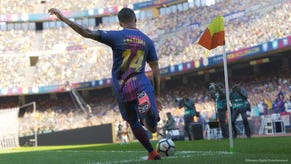On Its 30th Anniversary, Revisiting the Original Metal Gear
Hideo Kojima's stealth classic debuted on MSX on this day in 1987, and Kat and Jeremy return to Outer Heaven for a fresh take on a landmark classic.
This article first appeared on USgamer, a partner publication of VG247. Some content, such as this article, has been migrated to VG247 for posterity after USgamer's closure - but it has not been edited or further vetted by the VG247 team.
This article was originally run two years ago on the occasion of Metal Gear's 28th anniversary (yep). Since today is the original game's 30th anniversary, we're running it again here.
On this day in 1987, Konami published a military shooter called Metal Gear for the MSX home computer.
Not much of anyone noticed, though the NES port that came to America a year later ended up doing well enough there to warrant an NES sequel made exclusively for Metal Gear's U.S. fan base. But despite its comparatively low profile in Japan, this modest action game eventually snowballed into one of gaming's biggest and most beloved action franchises. Or maybe... "not-action" franchises, since the thing that truly set Metal Gear apart was its emphasis on avoiding conflict rather than gunning down everything in your sights.
On the occasion of the series' 28th anniversary — the last it will celebrate with original director Hideo Kojima at its helm — and with The Phantom Pain just around the corner, we decided to revisit the classic chapters in the series to remember where it all began... and to see just how well those old 8-bit titles hold up. As it turns out, the answer is "not too badly at all"...
Jeremy Parish:
The original Metal Gear turns 28 years old today — that's pretty crazy. I remember obsessing over the NES version of game as a kid, and now the series' future-facing plotline is no longer speculative fiction but rather an alternate past. Has it really been that long? Evidently so!
To mark the occasion, I decided to celebrate by filling in a long-overdue gap in my personal history with the Metal Gear saga: I finally beat the original game. Oh, I've finished Metal Gear many times, don't get me wrong. But the version I played was that NES port, which was a broken and incomplete rendition of the true original Metal Gear, which Hideo Kojima designed for the MSX home computer, and which never came to the U.S. until many years later.
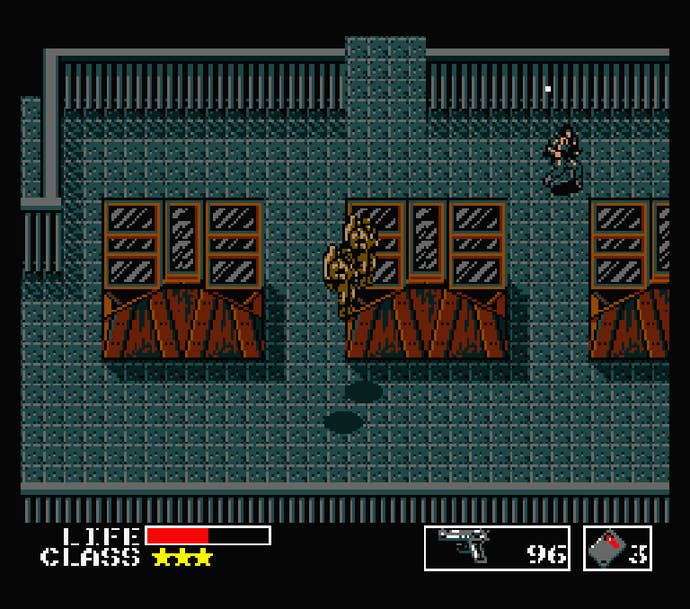
While much of the NES game was derived from the MSX source project, I didn't realize just how much had changed about the adventure in the conversion process. The NES port erased entire chunks of the game, shuffled around portions of the map, and changed the order of entire sequences. Of course, I knew the NES game omitted the "battle" with the super-weapon for which the entire series is named, but I didn't realize that playing the MSX version would be, for all intents and purposes, like experiencing Zelda's second quest. For instance, you don't need the compass and poison antidote to navigate the desert until the very end of the game, whereas on NES that bit connected the two main buildings of the enemy base and showed up around the midpoint. And there were entirely new portions I had never seen before, like Snake's very first battle with a Hind-D chopper.
It feels good to have experienced Snake's "true" origin story at long last. Playing a couple of hours of The Phantom Pain before E3 got me into the Metal Gear mood, and revisiting the game that started it all reminded me just how great and how substantial it was from the very beginning. Metal Gear was basically a military version of The Legend of Zelda, an action-RPG that pretended to be a Commando-style top-down shooter, and while it definitely has some dated elements it nevertheless holds up remarkably well in 2015.
Kat Bailey
Unlike Jeremy, I went into Metal Gear relatively fresh. I played the NES port a little bit growing up, but outside of the bit where Solid Snake climbs into a truck and it starts moving, my memories of it are hazy at best. I didn't really get into the series until Metal Gear Solid came around in 1999.
Looking at Metal Gear through that lense, the thing that jumps out at me the most is the way in which it strains against the limitations of its platform. The guard A.I. is simplistic in the extreme, the dialogue is limited to a handful of clipped lines, and the boss battles tend to boil down to finding a blind spot and shooting them until they die, but the spirit of the series undeniably present. One can even detect a bit of Metal Gear Solid's meta humor in Big Boss's admonition to turn off the MSX shortly before the climactic battle.

By the same token, though, Kojima's desire to weave a complex game out of simple mechanics occasionally get him into trouble. On more than one occasion I've had to essentially wander blindly in search of a trigger for the next area, my only hint being a few bits of cryptic dialogue from freed prisoners and the radio. I'll be told that I have to be taken prisoner, but to do so, I have to know to go to one comparatively obscure corner of the map to get the guards to appear. I don't mean to compare myself to one of the best game designers ever, but it reminds me a bit of my own adventures in mission design, in which I would painstakingly weave together a complex set of triggers to tell a particular story, often leaving players lost in the process.
But for all its quirks, Metal Gear is surprisingly accessible, if a bit primitive compared to its sequel. I'm surprised by how much I've enjoyed playing it.
Jeremy:
Yeah, the opaque adventure game elements definitely exist as Metal Gear's biggest stumbling blocks. Moments where you're forced to rely on codec communications, but you don't know with whom, or when you should call. There's an empty room in the corner of one building; somehow from that you're supposed to intuit that you need to call an agent, who will then give you a weapon you need? And then there's the fact that you can permanently screw yourself out of the endgame — you permanently lose rank when you shoot a hostage, and the agent who supplies you with key late-game items will only talk to you if you're at max rank.
But, OK, that kind of punch to the soul was pretty common back in the day. I've referenced The Legend of Zelda, and nothing in Metal Gear is as tedious as bombing walls and burning bushes in Zelda, or smashing every square inch of forest with a hammer in order to find Zelda II's hidden town. Metal Gear has some instances of unfriendly design, but it was simply doing so in keeping with the spirit of the age.
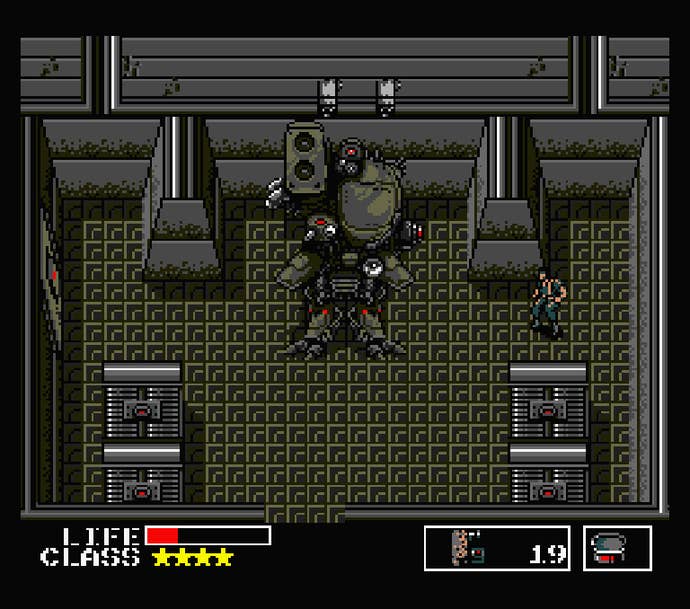
On the other hand, I love the fact that so many little Kojima-isms are already on display here. Besides the meta-humor, there's also his love for Hollywood movies and English-language puns. There's a boss who hides behind hostages — easy to beat, not so easy to beat without accidentally killing a civilian and losing rank — and his name is "Coward Duck." Why would Kojima name a character after a terrible George Lucas movie? Because he's Kojima and he loves Hollywood, that's why.
And there there are the invincible androids who look pretty much like the Terminator, which actually created something of a snafu in the revamped translations. The robots were originally called "Arnolds," but I guess Konami got cold feet about lawsuits and gave them some other name that didn't really say, "I'm talking about those robot dudes." So the tip on beating them would have been pretty much useless if I didn't already know the game. But still! Surprisingly cogent stuff from a guy whose only previous game credit was an endless runner about a penguin.
Kat Bailey
What I find striking about the original Metal Gear is how much it reminds me of Metal Gear Solid. You even have a fight with the aforementioned Hind copter, though it doesn't do much more than sit there on the ground and shoot. It's also possible to see shades of Metal Gear Solid's memorable boss fights in the encounters with villains like Coward Duck. I suppose it's natural for Kojima to reference his previous work, but when I think of the Hind D fight in Metal Gear Solid, I can almost hear him saying, "This is how I always imagined the original fight in my head."
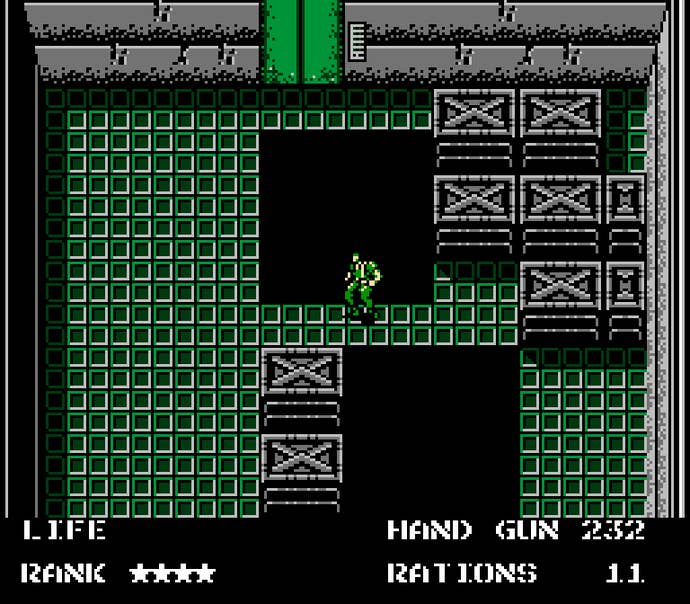
In any case, it's an interesting artifact, especially if you're a really big Metal Gear fan. It sounds like you're of the opinion that it holds up even today, Jeremy, which I can agree with to an extent. I really have been surprised by complex it is. But at the same time, there's also no denying how primitive it is, feeling in large part like a sketch of what the series would eventually become. You can definitely see the outlines of later concepts, but it's early days yet. I'm now really curious to play Metal Gear 2, because by all accounts it's a much more fleshed out game, and far more attractive to boot.
Jeremy:
Yeah, one thing about Kojima is that his work is endlessly iterative and self-referential, and it all starts here. Despite the fact that the plot here is more of a sketch than a fleshed-out story, it still lays a lot of groundwork that ended up being the foundation of the series for nearly three decades. Metal Gear, the weapon. Big Boss. Outer Heaven. Gray Fox. Even oblique references, like the apparently-not-the-same-guy Dr. Madnar from Metal Gear Solid 4. Metal Gear may have had a threadbare narrative, but Kojima reused every scrap of it over the years.
And let's not forget all the fundamental play mechanics, which were really at the heart and soul of Metal Gear. The codec communication system was a brilliant way to relay plot and gameplay information in medias res — you didn't have to seek out NPCs, because now they could call you! I'm sure this wasn't the first game ever to use such a device, but it certainly was the first I'd played. I think we reached Peak Codec in Metal Gear Solid 2, and now it's a far less intrusive tool (with the bulk of expository content presented through optional cassette recordings), but the origin story for every single video game where some voice in your ear relays essential info as you venture into the world is right here.
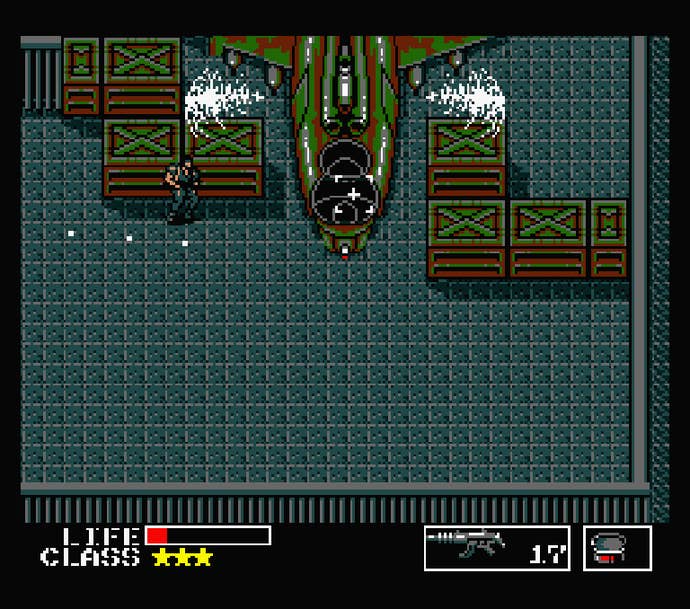
Likewise the entire concept of stealth action. Yes, there was Sentinel before Metal Gear, and even Kid Icarus had the Grim Reaper, who would only summon his baby reapers if you crossed his line of sight. Stealth and enemy activation on sighting had been used as a game device well before this. But Metal Gear was the first game to revolve almost entirely around the concept of sneaking around unseen through enemy territory — of avoiding contact, of taking out enemies silently, of the tacit acceptance of the fact that one man could not take on an enemy fortress without the being slippery like, well, a snake.
I don't think I really "got" it back when I first played; I was very confused that the enemy could spot me while I was wearing the cardboard box "disguise." Only later, after playing Metal Gear Solid, did I realize that the cardboard box would only work if the bad guys didn't see the thing moving around of its own accord. So obvious now, right? But in 1987, 1988... this was pretty sophisticated stuff in an action game.
All of this is why, when I played Metal Gear Solid a full decade after Metal Gear, it felt instantly familiar and deeply nostalgic. Sneaking through the tank hangar, dodging enemies to reach the elevator in the north wall, taking on a tank, battling weird guys with zany codenames... it all started way back on MSX, 28 years ago, and the series has remained surprisingly faithful to the original vision behind this old game.
Images courtesy of HG101.








